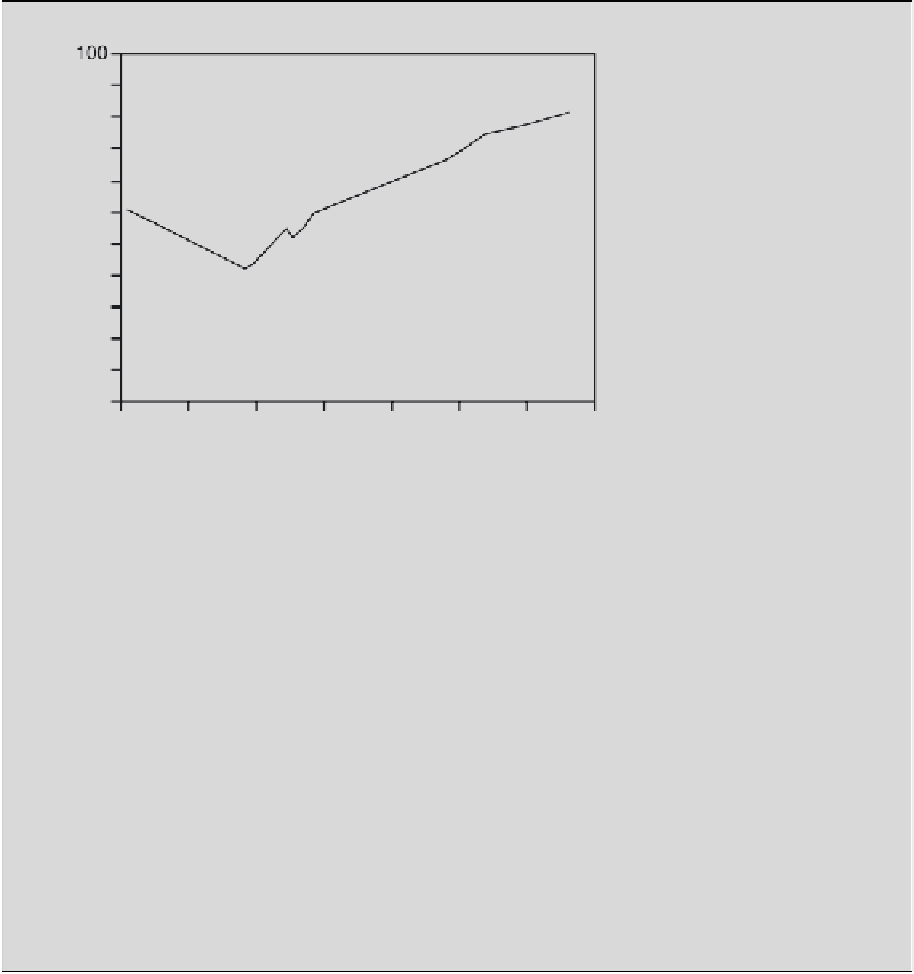Geoscience Reference
In-Depth Information
(c)
−
−
−
−
−
−
Case Fig. 8.1
(c) Cumulative
volume changes of profiles measured
on Follets Island (closed circles) and
Galveston island (closed triangles)
relative to 1980. Note how Follets
Island continued to accrete for
several years after Hurricane Alicia in
1983 whereas Galveston lost volume
for many years before gaining sand.
(After Morton et al. 1995.)
and wide. The beaches on Galveston Island never recovered their pre-storm volume whereas those
on Follets Island continued to accrete as sand (carried south from Galveston during the storm)
was transferred onshore under fair-weather wave conditions. The sand eroded from Galveston
Island during the storm acted as a sediment supply for Follet Island and thus whereas Galveston
experienced net retreat over the period 1980 -1994, Follet experienced net progradation.
A subsequent hurricane in 1988 (Hurricane Gilbert) caused erosion and a temporary reversal
in the recovery of Galveston Island, whereas on Follets Island, the post-Alicia sand still on the
shoreface was pushed onshore, causing enhanced accretion. This study demonstrates the import-
ance of antecedent conditions in determining coastal response to a storm. The accretion on Follets
Island after Hurricane Alicia temporarily reversed the long-term erosional trend, however, when
the sand supplied from Galveston Island is transferred onshore, it will be dispersed further
south in longshore drift and the long-term migration of the island is predicted to continue.
Relevant reading
Morton, R.A., Gibeaut, J.C. & Paine, J.G. (1995) Meso-scale transfer of sand during and after storms: implica-
tions for prediction of shoreline movement.
Marine Geology
126
, 161-79.
et al. (1999) identified three periods of rapid
foredune recession followed by long interven-
ing periods of accretion, which they attributed
to the impact of high-magnitude storms on
a modally high-energy beach. The observations
pointed to storms as the major determinants
of historical scale coastal behaviour, as storms
produced large-scale, near instantaneous ero-
sional events. Interstorm periods were charac-
terized by decadal-scale phases of post-storm
beach accretion.
Tsunami, as fast-moving solitary waves or
groups of waves, have been recorded on many
temperate coasts, but particularly on tectonically
active coasts, from sedimentary evidence (Dawson
1994) and direct observation. These waves may
reach heights of up to 30 m as they approach the
shore and cause overwashing of barriers and
mainland shorelines. Typically tsunami deposits
contain a range of grain sizes and may include
microfossils that indicate a continental shelf
origin (Hindson & Andrade 1999). They are


















































